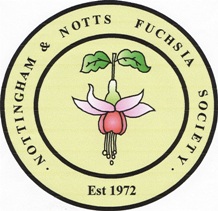
A Brief History of the Fuchsia
Contrary to popular belief, formal discovery of the plant we now call the fuchsia was made by Pere Charles Plumier, a Jesuit monk of the Order of Minims, a missionary and botanist during a plant finding expedition to the America's in search of new genera.
This was discovered in San Domingo in the Dominican Republic in 1695 but the specimen plants were lost in a shipwreck, nevertheless Plumier compiled his "Nova
Plantarum Americanum" from drawings in 1703 and published this knowledge in Paris naming the plant Fuchsia triphilla flore coccinea in honour of Leonhart Fuchs a German botanist / herbalist born in 1501. Fuchs was chair of Medicine at the Tubingen University at the age of 34 until his death on the 10th May 1566.
The first fuchsia plants arrived in England in 1788 from Brazil, Professor Philip Munz stating in his "Revision of the genus Fuchsia" in 1793 that this was brought in by Captain Firth a sailor whose wife grew it on a window ledge. Another version states that Captain Firth gave the plant to Kew Gardens where Mr James Lee, a nurseryman from Hammersmith eventually succeeded in buying it for trade propagation at a cost of £80. Irrespective of this confusion, Lee began to propagate as many plants as
possible and sold them to the trade at prices ranging from £10 to £20.
Between 1795 to 1845 plant collecting fever had spread and many species of plant and seed were introduced to England as well as Holland, France and Germany. The following are recorded at Kew F. Lycioides 1796 F. arborescens 1824 F. microphylla 1827 F. fulgens 1830 F.corymbififlora 1840 and F. apetala, F. decussata, F. dependens with F. serratifolia in 1843 and 1844; the last 4 species attributed to Messrs Veitch of Exeter.
In 1848 Monsieur Felix Porter in his book described some 520 species but by the fourth edition the number had decreased because Porter had become much more knowledgeable and realised that as happens today several crosses were made from the same parents by different growers being given different names resulting in confusion and obvious duplication.
In 1871, the first mention was made of James Lye who was head gardener at Clyffe Hall, a stately home of the Honourable Mrs Hay, in Market Lavington, sister of the Earl of Radnor. Lye became an experienced grower, exhibitor and hybridist of fuchsias producing pillar specimens eight to ten feet high and four to five feet across the base. He was subsequently described as the champion fuchsia grower in the West of England. The public popularity with fuchsias lasted up to the outbreak of
World War 1 at which time the greenhouses at Market Lavington were turned over to food production.
Many of James Lye's cultivars are as popular today as they were in his time, (he raised 68 hybrids principally having a waxy texture some of which have disappeared over time). Kristopher Harper of Norwich, today supplies many of James Lye's cultivars and is researching the life and varieties of James Lye.
Up until the start of World War 1, famous varieties of the time were grown extensively for the Covent Garden market by several growers situated around the periphery of the capital. In 1949 plant and hybrid production resumed on a prolific scale with notable British growers involved. The likes of Edward Banks, Dr Oliver Colville, Ron Holmes, Mathew Ryle, Thomas Thorne, Alf Thomley, Wilf Tolley and James Travis. Not to be outdone the East Midlands was well represented with Enid Handley, Derby; Cliffe Gadsby, Breadsall; George Roe, Radcliffe on Trent; Harold Smith, Kegworth; John Wright, Atherstone; and Robert Pacey of Stathern
The fuchsia belongs to the genus Onagraceae, a family of plants that includes amongst others evening primrose (Oenothera or suncup) and fireweed (rosebay willowherb). There are two principle areas of the world that fuchsia species can be found in the wild i.e. Central and South America and New Zealand and Tahiti.
All fuchsias can be broken down into eleven fuchsia sections listed in
alphabetical order with the number of species shown in each are
Ellobium (3); Encliandra (6); Fuchsia (63); Hemsleyella (14); Jimenezia
(1); Kierchlegeria (1); Pachyrrhiza (1); Procumbentes (1); Quelusia (9);
Schufia (2); and Skinnera (3).
There are many national and international societies today but the first to form was the American Fuchsia Society in 1929 who imported many plants from H.A.Brown's nursery in Chingford Essex as a basis for the American hybridisers to cross breed.
The British Fuchsia Society was formed in 1938.
